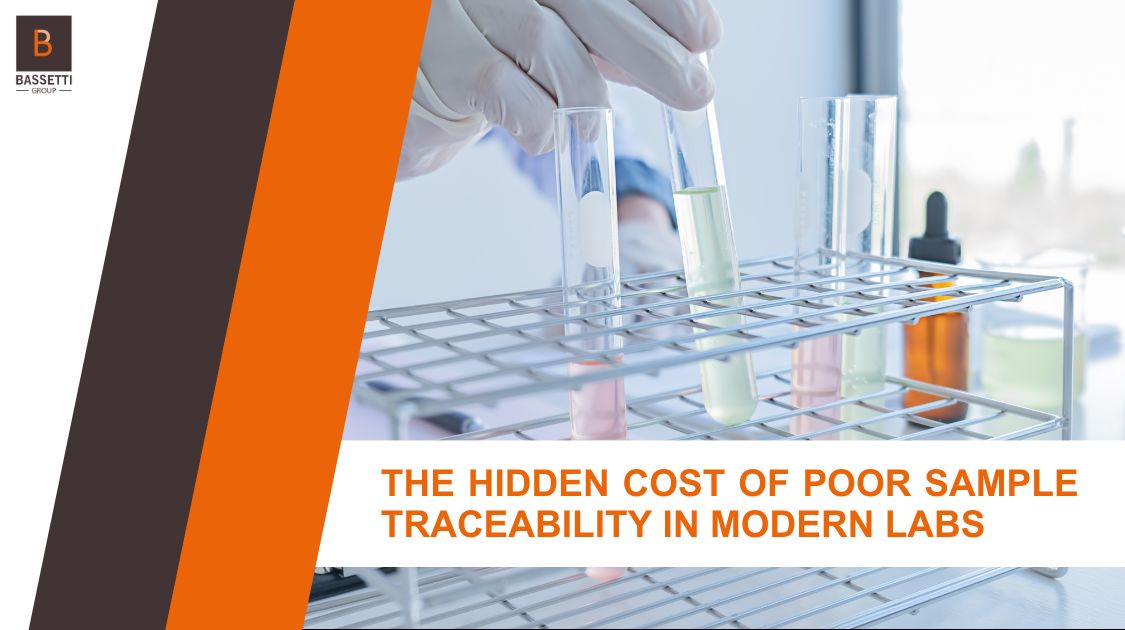The Hidden Cost of Poor Sample Traceability in Modern Labs
In today’s data-driven laboratory environment, traceability is more than a compliance checkbox, it’s the backbone of reliable science, operational efficiency, and customer trust. Yet, despite advancements in laboratory informatics, many labs still rely on fragmented tracking systems, manual labeling, or disconnected spreadsheets to manage samples and test results.
The result? Lost samples, inconsistent data, failed audits, and costly rework.
Let’s explore how poor sample traceability impacts laboratory operations, the evolving regulatory pressures around data integrity, and how modern LIMS and LES solutions are transforming traceability from a pain point into a competitive advantage.

The Real-World Impact of Poor Sample Traceability
Laboratories handle a constant influx of samples, reagents, and test data, each with its own lifecycle and compliance requirements. Without a centralized system to track and manage this information, even small oversights can snowball into major issues.
1. Sample Mix-Ups and Lost Data
Manual labeling or spreadsheet-based tracking increases the risk of misidentification and lost sample data. When multiple projects run concurrently, it becomes easy for samples to be misplaced, mislabeled, or analyzed under the wrong protocol. This not only delays projects but also erodes data reliability.
2. Regulatory Non-Compliance
Regulatory bodies such as the FDA, EPA, and ISO 17025 place strict emphasis on sample traceability and data integrity. Missing timestamps, undocumented transfers, or incomplete chain-of-custody records can lead to audit findings, rejected results, or even license suspension.
3. Increased Operational Costs
Every lost or compromised sample leads to retesting, wasted reagents, and lost labor time. For laboratories running high-throughput analyses, these costs accumulate quickly, affecting both profitability and throughput.
4. Reputational Damage
For labs serving external clients, sample traceability failures directly affect credibility. A single error can lead to contractual disputes, client churn, or brand damage, particularly in pharmaceutical, food, or environmental testing sectors.
The Evolving Traceability Challenge in the Modern Lab
Today’s labs face more complex traceability challenges than ever before:
- Increased sample volumes from automation and high-throughput workflows
- Multi-site operations requiring global data synchronization
- Integration of IoT-enabled instruments and real-time monitoring systems
- Rising expectations for electronic records and audit trails under ALCOA+ (Attributable, Legible, Contemporaneous, Original, Accurate) standards
Traditional methods (paper forms, spreadsheets, or legacy systems) simply can’t keep pace. Laboratories need integrated, digital solutions that unify data capture, process control, and sample tracking.
How Modern LIMS and LES Solutions Transform Traceability
A Laboratory Information Management System (LIMS) provides the foundation for managing samples, workflows, and data. However, a Laboratory Execution System (LES) extends this functionality to the bench, ensuring every test step, measurement, and approval is executed according to procedure.
When combined, LIMS and LES create a fully traceable, compliant, and auditable digital ecosystem for laboratory management.
1. End-to-End Sample Lifecycle Management
A modern LIMS provides complete visibility across the sample lifecycle—from registration to disposal. Every step is timestamped, and every change is logged, creating an unbroken digital chain of custody.
The LES layer reinforces this by guiding analysts through digital SOPs, ensuring that every action, from reagent preparation to instrument setup, is executed and documented correctly.
Together, they ensure:
- Every sample and batch is uniquely identified via barcode or QR code
- Reagent and material usage is recorded automatically
- Samples can be traced across locations, instruments, and personnel
This traceability reduces the risk of mix-ups, eliminates manual transcription errors, and creates a single, verifiable data trail for audits.
2. Digital SOP Execution and Control Protocols
Inconsistent execution of Standard Operating Procedures (SOPs) is one of the top sources of traceability breakdowns. An LES solves this by converting SOPs into digital workflows. Analysts receive step-by-step guidance, ensuring uniform execution across shifts, sites, and analysts.
Key features include:
- Digital control protocol execution to enforce correct process steps
- Automatic validation of results based on predefined product specifications
- OOS (Out-of-Specification) management to flag non-conformities in real time
- Inspection plan management that defines and automates quality control checkpoints
By enforcing procedure adherence at every step, an LES ensures traceability is built into the workflow—not added as an afterthought.
3. Authorization and Competency Control
Traceability isn’t only about where the sample has been, it’s also about who handled it and whether they were qualified to do so.
With authorization management built into systems, laboratories can define who is permitted to perform specific analyses. The system validates the analyst’s qualification before allowing access to the protocol, ensuring compliance with internal training matrices and external regulatory requirements.
This minimizes human error, ensures accountability, and strengthens data integrity across the laboratory.
4. Real-Time Instrument and Data Integration
Poor traceability often stems from disconnected instruments and data silos. A modern LIMS integrates directly with laboratory instruments and sensors to automatically capture readings, eliminating manual data entry.
The LES further enhances this by providing real-time monitoring and feedback, alerting users when data falls outside specification or when calibration schedules are due.
This level of connectivity ensures that traceability includes not just the sample, but the conditions, equipment, and parameters associated with each result.
5. Compliance and Audit Readiness
For QA and compliance teams, a strong traceability framework simplifies regulatory inspections and quality audits.
By maintaining centralized electronic records, laboratories can instantly retrieve complete audit trails for any sample, showing:
- Who performed each step
- What equipment was used
- Which reagents or materials were consumed
- When and where the activity occurred
This is essential for compliance with GLP, ISO 17025, ISO 9001, and FDA 21 CFR Part 11 requirements.
Automated traceability also reduces the stress and resource load associated with preparing for external audits.
6. Data Analytics and Continuous Improvement
Modern LIMS platforms increasingly include analytics modules that turn traceability data into actionable insights.
By analyzing sample flow, batch outcomes, and deviation trends, labs can identify:
- Bottlenecks in sample handling or analysis
- Common sources of error or delay
- High-risk materials or instruments linked to non-conformities
This enables a shift from reactive quality management to predictive improvement, empowering labs to continuously refine their operations and maintain consistent quality standards.
The Business Case for Better Traceability
Investing in a LIMS/LES solution is not just about compliance, it’s a business decision. Better traceability reduces material waste, prevents costly rework, and shortens time-to-result. It enhances laboratory productivity while building trust with clients and regulators alike.
In competitive industries like pharmaceuticals, biotechnology, and manufacturing, where margins are tight and compliance expectations are high, traceability directly impacts profitability and reputation.
TEEXMA for LIMS: Delivering Complete Traceability and Control
TEEXMA for LIMS integrates LIMS, LES, ELN and QC functionality into one cohesive platform, offering laboratories a fully digital, connected, and compliant environment.
With features such as:
- Digital SOP and control protocol execution
- OOS and specification management
- Authorization and qualification validation
- Low-code configurability for rapid adaptation
- Seamless integration with instruments and IoT systems
TEEXMA for LIMS empowers laboratories to achieve true end-to-end traceability, maintain compliance, and accelerate data-driven decision-making.
For labs striving to modernize their quality processes and eliminate traceability gaps, TEEXMA provides not just software, but a strategic foundation for sustainable, compliant, and efficient laboratory management.
